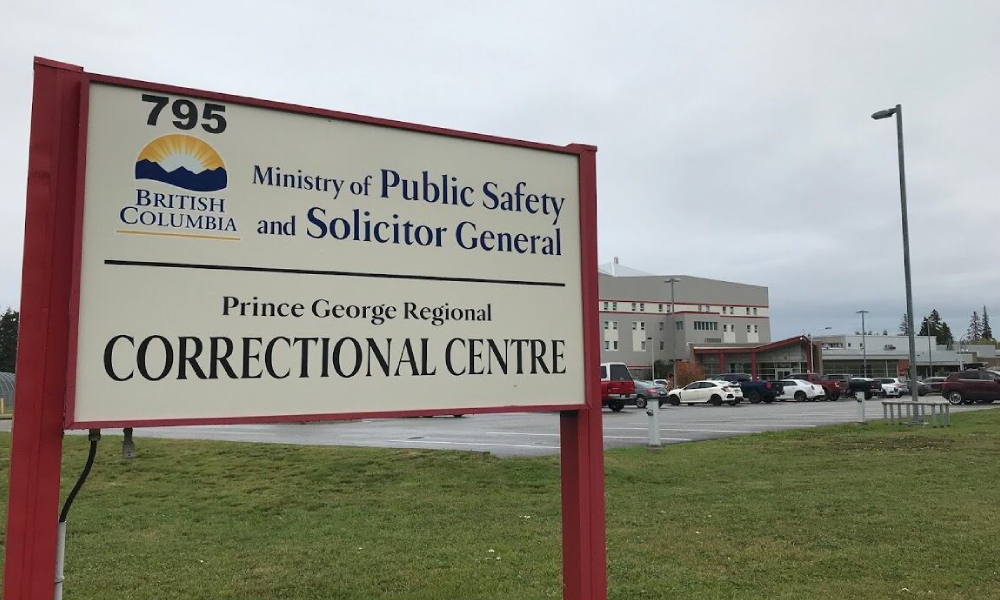
Provincial Court Chief Judge says project aims to find to better bail process for ‘all participants’

The Provincial Court of British Columbia has launched a pilot project to improve the bail process in the north by installing more video technology.
The Northern Bail Pilot Project started testing a centralized bail hearing model in mid-April. Melissa Gillespie, Chief Judge of the Provincial Court of BC, says in emailed answers to questions, that the project’s purpose is “to have bail hearings conducted in a manner that works better for all participants . . . by having the hearings done through two virtual hub courts on weekdays.”
The accused appear from either a police detachment or a remand centre videoconference or audioconference. Microsoft Teams units have been installed in seven RCMP detachments across northern BC. These are Burns Lake, Dawson Creek, Fort Nelson, Kitimat, New Hazelton, Prince George and Quesnel. One MS Teams unit has also been installed in the Prince George Regional Correction Centre.
The practice directive for the pilot says the project also involves the creation of two virtual courtrooms (one for matters from Prince George and Cariboo catchments, the other for those from the Peace and Northwest detachments) and the use of Microsoft Teams to enhance secure and private communications between the accused and their counsel apart from the court process.
Justice Gillespie says there are 37 police detachments in the northern region of British Columbia, and many of these detachments are long distances from courthouses and the regional correctional facility.
“Centralizing bail provides the Crown with an opportunity to assess new police investigations with a view to determining whether their charge assessment standard had been met, and if so, what charges would be appropriate,” she says.
It is anticipated the project will help the person arrested and the court in several ways, Gillespie says. These include:
In its web posting describing the project and how it can help move bail hearings along, the court says: “imagine you were arrested on Monday in a small northern BC community where the provincial court
convened only on Thursdays. If the police did not agree to your release and you wanted a bail hearing before a judge, you would be held in custody while transport was arranged, then transported to Prince George to appear in court for the hearing. If you were released on bail, you’d find yourself in Prince George, far from home, perhaps with no way to get back.”
If the arrest came on a Thursday, there could be a bail hearing in the local court. “But the judge would have had to interrupt the trials scheduled for that day to conduct your hearing. The resulting loss of court time might prevent a scheduled trial from finishing. Adjourning that trial would cause the litigants and their witnesses inconvenience and expense.”
While work was already in progress before the pandemic to design a better process for bail hearings, COVID-19 accelerated the efforts in the Northern region, Gillespie says.
“The pandemic heightened the need for an immediate response across all justice stakeholders to maintain operations while complying with public health regulations and ensuring access to justice in the North.”
The pilot will evaluate the program to determine its long-term potential and the viability of expanding it through reviews at 30, 60, and 90 days. Says Gillespie: “We anticipate that the process will be revised on an ongoing basis as a result of the feedback from those evaluations. We are also testing out the technology required to support this iitiative. This pilot will also help us assess the resources police may require to support this initiative.”
In terms of videoconferencing equipment, in some detachments and centres that are not part of the pilot, the equipment is in place, Justice Gillespie says. “In others it would need to be put in place or additional units added for the process to be extended to additional locations.”
The court is working with the provincial government, Legal Aid BC, defence counsel, BC Prosecution Service, Public Prosecution Service of Canada, and police on the project.
“The project represents a significant change to our duty counsel process,” says David Griffiths, manager of Criminal, Immigration and Appeals at Legal Aid BC. “The move away from in-person to virtual bail hearings is forcing us to rethink the way we provide duty counsel on a regional basis. It means not only learning new technology and new procedures but how to build new networks.
He adds: “Lawyers who are used to using the resources in the community where they practice now have to be thinking about the resources to assist their clients in more communities across an entire region. Legal Aid BC is working with lawyers and community agencies to build that broader capacity.
“There have been some bumps along the road, but we are smoothing those out,” Griffiths notes. “So many processes were centred on being in a courtroom, in person, and now we have to take a more regional approach and create new connections.”